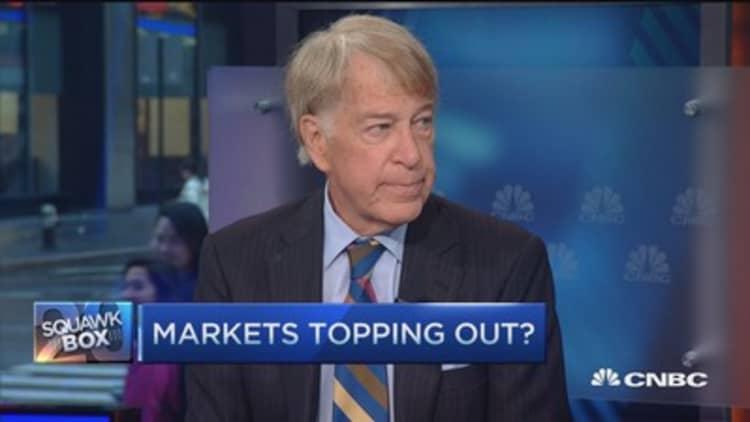
First, the good news: U.S. stocks have gone 1,339 calendar days without a 10% drop. The bad news? When the dreaded 'correction' occurs, the market's personality could change for the worse.
It is not uncommon for the Standard & Poor's 500-stock index to go a long time without suffering a 10% drop — the official definition of a correction, according to Bespoke Investment Group.
The current 1,339-day — or 3.5-year — correction-free run ranks third in history.
More from USA Today:
Apple's latest move pushes debt to $45.5B
5 companies heat up in the summer
Google stock is dead money. Here's why
The longest stretch without a 10% setback occurred during a 7-year, 2,553-day stretch from October 1990 through October 1997, according to Bespoke data. The second-best run without a 10% setback occurred in a 1,673-day, 4.5-year run, from March 2003 through October 2007.
More good news, though long correction-less runs makes investors "uneasy" as they think the market "may be overdue" for a correction, doesn't mean the long-awaited correction will materialize, Bespoke stressed in an afternoon research note to clients.
For example, back on Jan. 28, 1994, the S&P 500 set what was, at the time, the longest stretch without a correction. Had you gotten out of the market completely back then, you would have "missed out on a 105%-plus gain in the S&P 500 over the three years and nine months bef0re we saw a correction," Bespoke pointed out.
Read MoreWho are CNBC's Top 100 Wealth Managers
So what's the catch? It turns out that after these lengthy periods without a 10% drawdown, the complexion of the market often changes, and more often than not, for the worse.
In fact, after the past four longest correction-less free periods dating back to 1967, the S&P 500 not only "corrected, but went into a bear market (or a drop of 20% or more)," according to Bespoke. And the broad market gauge was down a year later following all four occurrences.
The takeaway: "When the correction comes is anyone's guess, and basing your investment decisions based on the fact that the market is 'due' is foolish," Bespoke wrote.
But — and it's a big but — the investment research firm added: "Whenever that correction does come, however, history suggests that the following year will be starkly different from the type of market environment that we have become accustomed to in the last three years."


